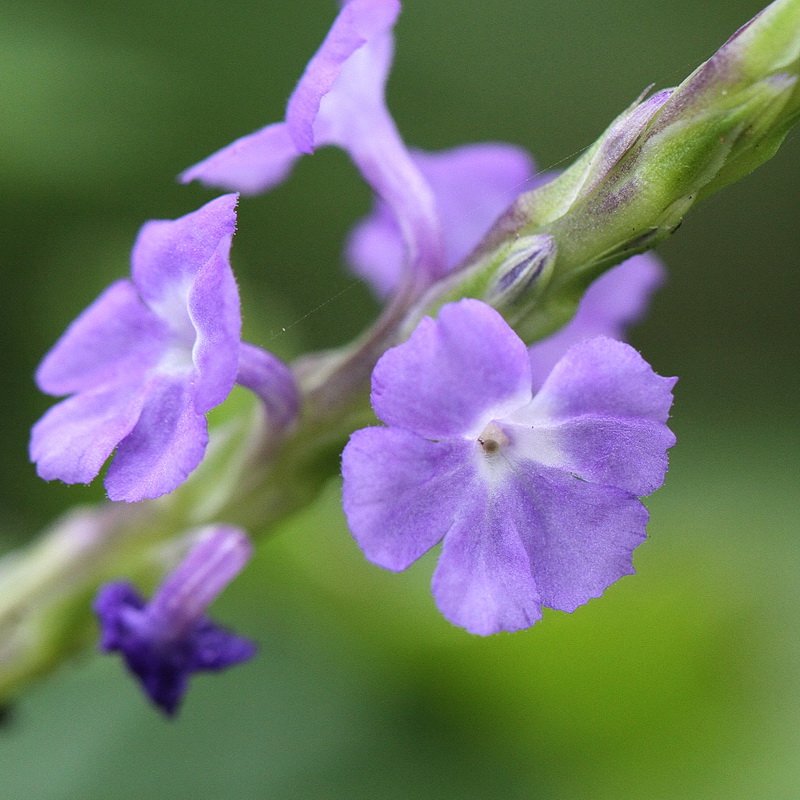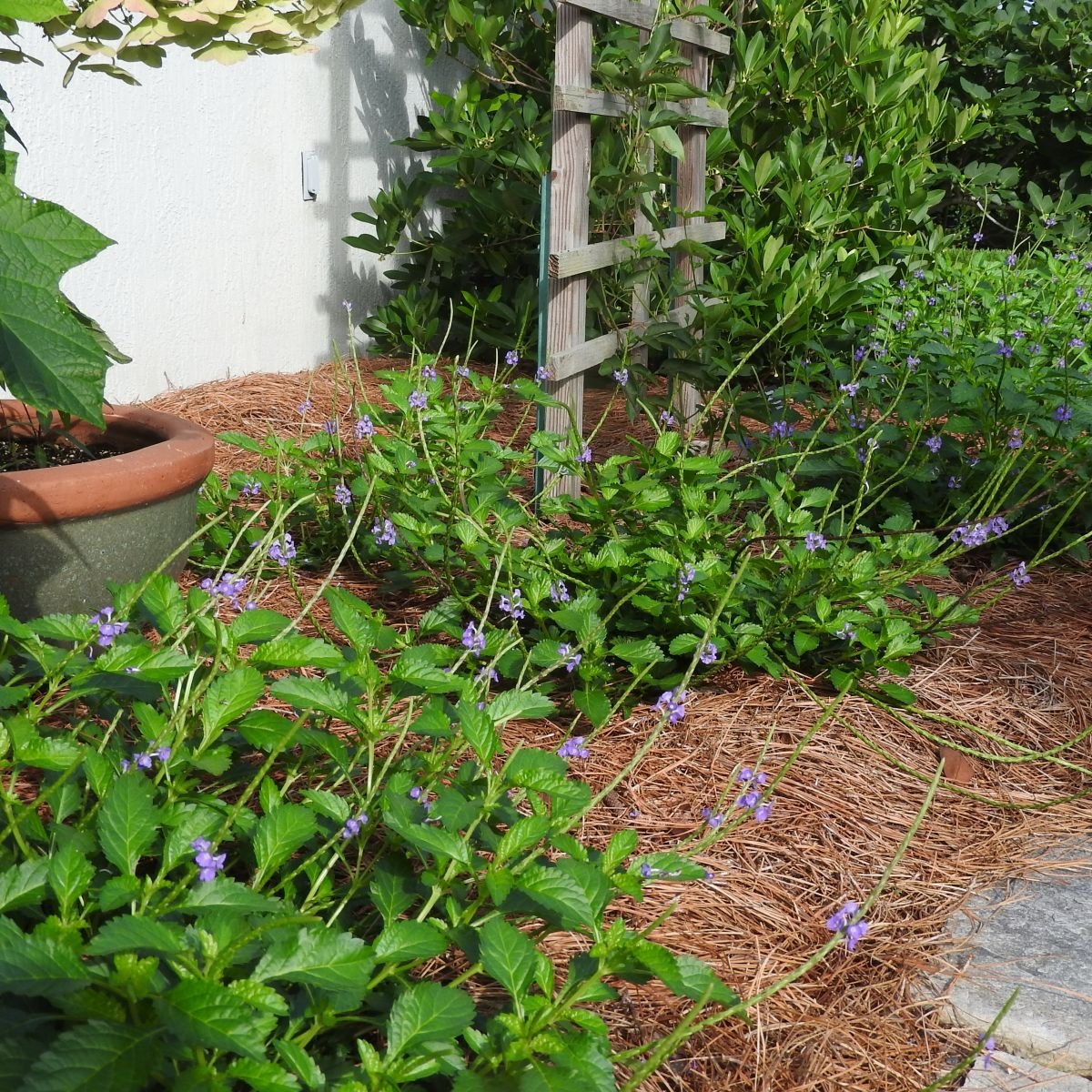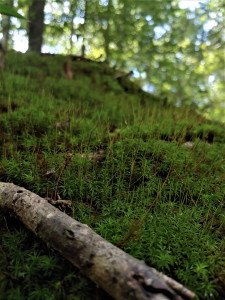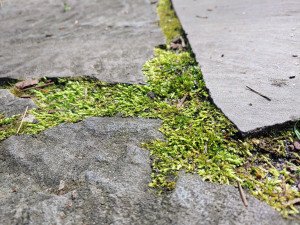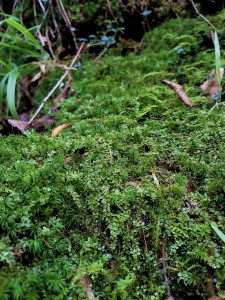Incredible and incredibly edible, the native wildflower Blue Porterweed (Stachytarpheta jamaicensis) is a feast for the eyes and the stomachs of humans and pollinators alike! Stachys comes from the Greek word for an “ear of grain” and tarphys comes from the Greek word for thick, referring to this plant’s reed-like flower spikes. Jamaicensis refers to one origin country in this plant’s native region. Can you guess which one? Jamaica. Native to South and Central Florida as well as the Caribbean and Tropical America, this wildflower grows as an annual or tender perennial in North Florida and dies completely during our cold winters unless protected. One thing is certain – this low, sprawling wildflower makes the most of its time when planted this far north.
Long, narrow spikes bear delicate pastel-blue to lavender flowers with white centers that open for just one day before falling away.. or into a harvest basket. These edible blooms, eaten raw, taste exactly like mushrooms and the flower spikes, used like a bay leaf, add seasoning to soups and stews. A natural foam occurs from the dried leaves if steeped into a tea or brewed into a beer, hence the name “porter”-weed. This fizzy mixture benefits humans both recreationally and medicinally, with many claiming the beverage aids in the treatment of fever and other maladies. Researchers study S. jamaicensis extensively for its antioxidant, anti-inflammatory, and antibacterial properties. A leaf extract contained high levels of phytochemicals with proven anti-microbial power.
Pollinators use the leaves in addition to humans! The toothed, ovate leaves of blue porterweed provide a meal to Tropical Buckeye butterflies (who live further south than Tallahassee). These butterflies feed on the porterweed as it is one of the buckeye’s few larval hosts. Blue porterweed’s prolific blooms emerge from spring to fall and these nectar-filled, tubular flowers attract hummingbirds, butterflies, moths, and bees. Cloudless sulphurs tend to rest along the flower while moths flit back and forth along the spikes at dusk.
These blooms refuse to open on cloudy days or if placed in too much shade so plant in full to part sun. Blue Porterweed grows low at just eight to twelve inches tall with a three foot spread so give this sprawling plant plenty of space to grow! Plant near shelters to protect the plant when it freezes or treat as an annual and allow it to die during the winter. The leaves turn from their dark green to a purple color and exhibit some foliar damage in temperatures colder than fifty degrees. However sensitive to cold, its natural habitat on coastal dunes, shell mounds and disturbed areas means the Blue Porterweed tolerates salt and drought.
Non-native, invasive varieties such as Stachytarpheta urticifolia or Stachytarpheta cayennensis look extremely similar to the native S. jamaicensis. The S. urticifolia and S. cayennensis’s erect growth habit distinguishes them from the native’s prostrate habit. I would advise you to take care identifying or avoid buying porterweed when shopping at non-native nurseries as these two species escape cultivation and infringe on native habitats. If you love the native blue porterweed and want more of it, this plant propagates best from cuttings and ensures the origin of the specimen.
Native blue porterweed has a rich history and is a robust southern staple in the garden. This flower pulls its weight in the landscape, spreading out and blooming non-stop most of the year. If you're interested in establishing a butterfly or edible garden, this plant has a foot in both categories and I’d recommend rushing out to get one as soon as possible!

